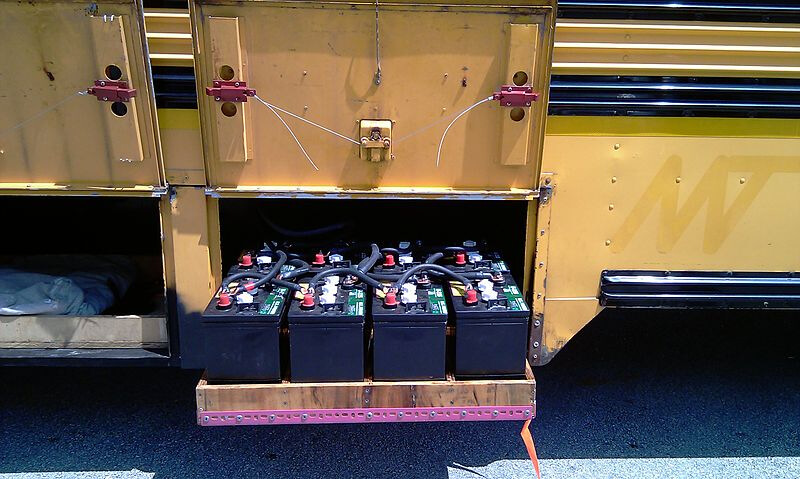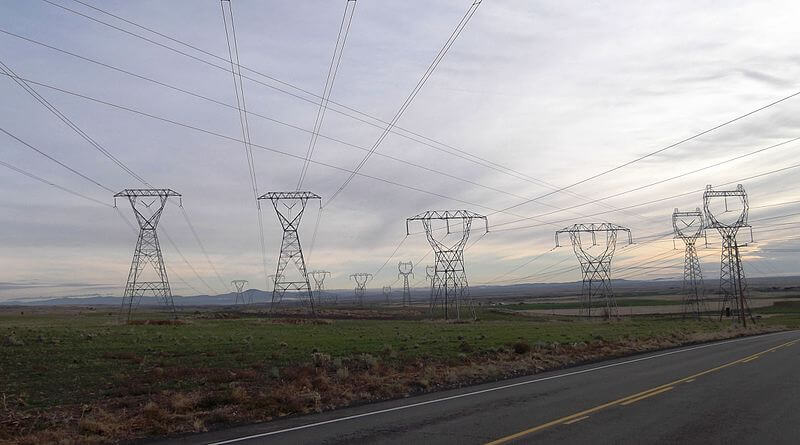The solar power industry has really taken off in the last few years worldwide and also across major parts of the subcontinent. In India as well, many sections of the agricultural professionals have turned to solar-powered water pumps for their irrigation requirements. Solar-powered pumps are nothing but water pumps, which use solar energy instead of traditional electricity. The recent surge in solar powered pumps in the agriculture sector is largely because of the cost-effectiveness and durability.. Additionally, they are also quite easy to install and requires much less maintenance compared to the more traditional electric water pumps.
In this article, today, we will try and give you some vital info on how you can run solar-powered water pumps step by step so that you can use them according to your requirements. Keep in mind that the average shelf life of a solar-powered water pump is anywhere between 15 to 20 years on average. This kind of system is ideal for areas and regions where there is unreliable supply or availability issues regarding electricity. So sit back and let us take you through this journey of solar water pumps for home usage and we are sure that by the end of this article, a lot of your doubts will be cleared. We will start off the discussion by outlining some of the major benefits of solar-powered pumps and then move on to some more intricate issues that are relevant to the topic of discussion at hand.
What are the benefits of a solar-powered pump?
There are 3 main benefits of shifting to a solar powered pump from a traditional water pump that runs on electricity. Most users have stated that the main reason for their choice of shifting to solar pumps from electric water pumps, is because it removes the dependency on the grid system. Most pumps today are totally dependent on the grid and if there is a power cut, everything comes to a sudden standstill.
Another big reason for the sudden surge of solar power pumps is that they are convenient to use. This is because the pump can use solar energy during the day and the stored power will allow you to use the pump at different times of the day where there is no sunlight.
If you are involved in agriculture and you do not enjoy the overdependence on electricity, then solar water pumps for agriculture can be a godsend for you. For instance, there are a lot of handpumps still in use in India, which can be mounted on a well without causing any kind of disruption to your electric well pump. This allows you to have a backup option to deal with unexpected power outages.
Solar Pump Solutions
The type of solar power setup you wish to go for will depend upon your needs and requirements related to water supply. There are two main options that you have at your disposal.
If you are looking to install a solar water pump for your home to get water for household chores and such, we would recommend you to go for a 2 off-grid solar system, if you have a water motor that has a ½ HP rating.
In case the water pump is of a higher HP rating such as 1 HP, the ideal choice would be to go with a 3 kW solar system.
2 KW Off-Grid Solar System
This type of solar pump setup is ideal for large homes as well as small and medium-size commercial establishments, shops and offices. This type of a system can run more or less anything when it comes to electrical appliances. The only thing it is unsuitable for is running air conditioners. You will get around 8 to 10 units of generation every day and it is also easier to install, as it takes only 200 square feet of roof space.
3KW Off-Grid Solar System
If you are looking to set up a solar system for a big house or a larger shop or commercial establishment, then this is the way to go. This type of solar system is capable of producing up to 15 units of power every day and requires slightly more rooftop space to be set up.
How does a Solar Water pump function?
Just like any other regular water pump, a solar water pump, pumps water to different taps and outlets as per requirements from your main water storage tank. The difference is that a solar-powered pump manages to do this without having recourse to dedicated power lines. Solar pumps can be used effectively for regular day-to-day activities, as well as commercial activities related to agriculture, irrigation and animal husbandry. One of the basic ways in which a solar pump differs from a regular water pump is that, it uses DC current instead of AC current, which is used by most traditional electric water pumps.
Most of the solar pump models are ideally designed to be used as a part of off-grid systems and they are also highly efficient in terms of their power utilization and task management. As it uses DC current, it does not have to suffer any loss of power while converting DC to AC and vice-versa. This allows you to maximize pumping while at the same time minimizes the use of power.. If you use PV-Direct, you can directly pump from the solar panel without using separate batteries for the purpose. Those who use solar powered devices know that storing the power in batteries can result in loss of power to a certain extent. The possibility of this happening is completely negated as the water is stored in a cistern or a tank and pumped from there directly to various outlets. In case of a cistern, you will have a removable lid at your disposal where-as in the case of a tank, it will generally be sealed.
Submersible vs Surface Solar Pumps
Solar Pumps generally come in two different varieties. A submersible pump, as the name suggests, is a pump that is installed under water. These are generally found submerged in a well although they can also function inside a pond or a stream, if they are raised slightly from the bottom of the water bed.
A surface pump on the other hand can only be installed above the surface of the water and is equipped with an intake hose which feeds the pump by taking water from the source. Then a separate output hose performs the task of feeding the tank. Make sure to keep the pump close to the water source as that helps in effective water intake into the pump. The vertical distance between the water source and the pump should be as low as possible to ensure effective passage of water intake.
Linear Current Booster (LCB)
A solar pump requires a solid boost before functioning to full throttle. Once it starts, a pump requires a high surge of current initially, but it does not require high voltage. This is why, sometimes, a solar pump may struggle to power itself effectively in the dim morning light of dawn. And to address this issue, we have a device called a Linear Current Booster that is installed in between the solar panel array and the pump in order to ensure current output so that the pump can perform its task to the best of its capacity in dimly lit conditions. This is achieved by dropping the voltage output as this does not affect the water flow as much as the current requirement. Ultimately, this is great for giving higher levels of convenience and the option to have uninterrupted power supply during different times of the day when the sunlight is not at its peak.
Float Switches
In case of solar water pumps for home usage, some people use a float switch, which is a device that is used to control the turning off or on of the pump based on the water level. In case of a pump-up switch, it will turn on the pump when the water is low and turn it off when the water level is high. On the other hand a pump-down switch will do the opposite and turn the pump off when it is empty and vice versa. There are also LCBs which are able to connect the float switch to its input system without directly connecting to the pump. Always be sure to check the LCB manual thoroughly for the details on this matter.
Water Pressure
In case of water supply to a house, there has to be adequate water pressure in the pipes to allow the water to flow freely. This is measured in PSI or pounds per square inch. In general, most houses have a PSI rating of around 40, although 20 PSI can be enough for your requirements. There are different ways to achieve higher water pressure and gravity. Feed is the most basic and common system that we would recommend. This mechanism uses the power of gravity by setting up the tank on top of the house.
Booster Pump Mechanism
You might very well find yourself in a situation where it is not possible for you to set up a high storage tank that is placed above your house. In this case, you have the option of using a small booster pump to ensure that enough pressure is created in the pipes connected to the system. This pump needs to be connected to a battery bank. This allows you to have access to water at any point of time during the day by creating conditions for effective pressure. It is also very important to check the technical specifications of the booster pump that you will be using to gauge PSI capability, while also getting a good idea about how many amps will be required to set up the process by which pressure is created.
Conclusion
In this article today, our main focus was to give you detailed and comprehensive reviews of the process and steps involved in the setting up of solar-powered water pumps. We started off with a short introduction on what solar pumps are and how they can be beneficial to different people for personal as well as professional purposes. We also spoke at length about the various kinds of solar water pumps for agriculture that are in vogue and the different benefits it offers as opposed to traditional electric water pumps. Because of the cost-effectiveness of solar-powered pumps, a lot of households in India are turning to this new form of texhnology and as a result they are reaping significant long term benefits.
Through the course of this article, we have also discussed numerous steps and choices that are important to consider before deciding on a specific solar power setup that you are planning to undertake. Make sure to read these steps carefully and we also encourage you to do further in-depth research if required. Hopefully, we were able to cover some useful topics in this article and we also hope that it finds some good practical use for your requirements. With that we bid you farewell and we wish you all the best in your efforts to get a solar-powered pump to meet your personal or professional water supply requirements.
- 300 Watt Solar Panel Prices in India: 2023 - March 8, 2023
- 500 Watt Solar Panel Prices in India: 2023 - March 5, 2023
- Loom Solar Panel Price: 2023 - February 19, 2023


